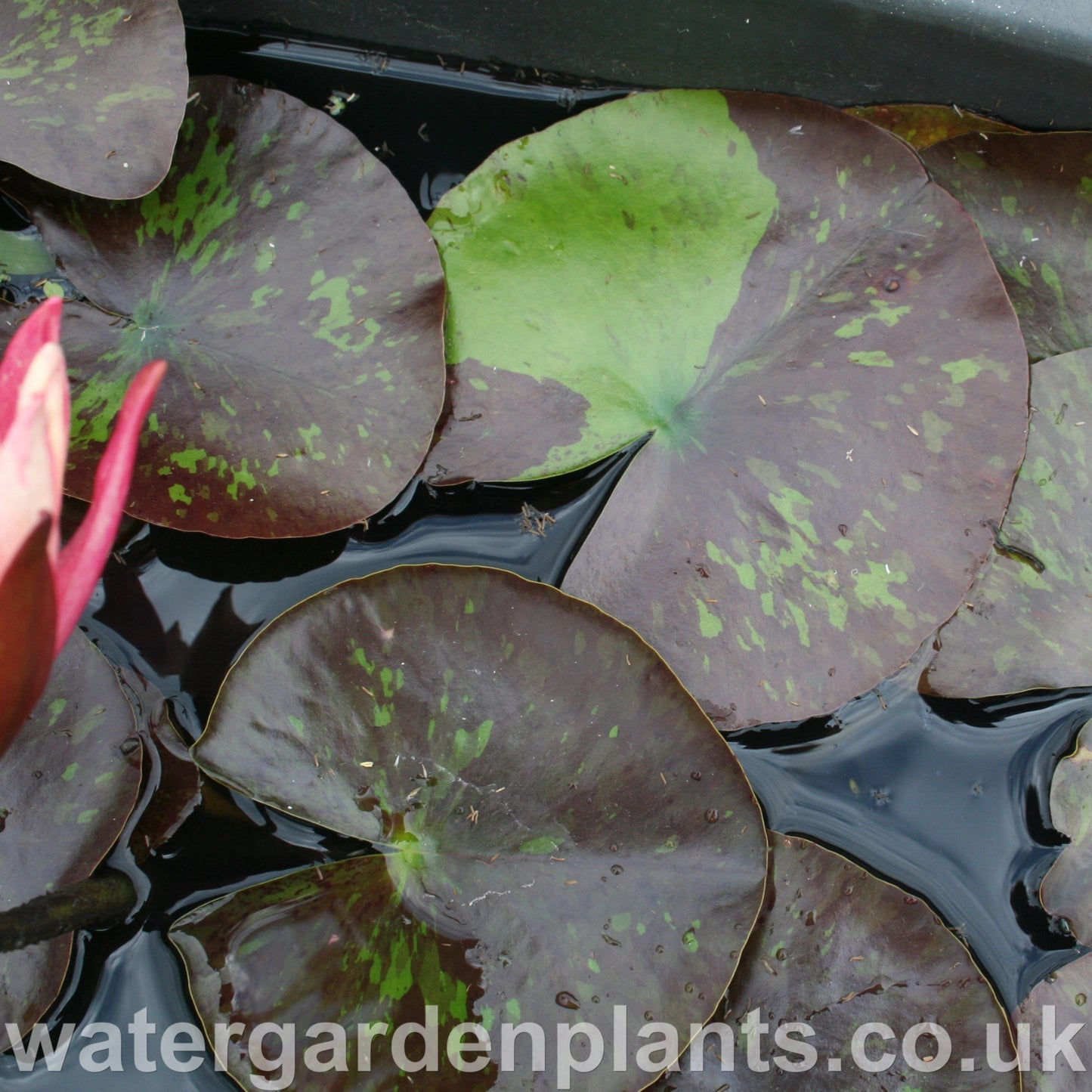




- Approximate leaf spread: 100 - 120cm (39 - 48 inches)
- Recommended water depth over crown of plant: 20 - 90cm (8 - 36 inches)
- Flowering time: June to September
- Supplied in the solid 1 litre pot we grow them in - for best results we recommend potting on using a 3 - 4 litre pot
'Wanvisa' was discovered in Thailand around 12 years ago and took the waterlily world by storm, winning 'Best New Waterlily' in the International Waterlily and Water Gardening Society awards. The flowers are semi-double in form and variable in colour - the majority of them are an unusual orange-peach-pink colour with flecks, and occasional streaks of yellow, sometimes fading to apricot-cream near the centre. The intensity of this colour varies, making every bloom unique. Every now and then, a bloom will appear which is part apricot-cream and part peach-pink right across it, as though two flowers were joined together - sometimes more of one colour, sometimes more the other. These blooms stand high above the foliage, giving a wonderfully exotic effect. The leaves are a deep maroon colour, flecked with green, and just before a part-coloured bloom appears, a part-coloured leaf which is half maroon and half green will precede it.
When 'Wanvisa' first appeared a decade ago, most nurseries stocked it immediately, but we didn't. This was partly because there were already many other lovely peach waterlilies, but also because we knew that lilies developed in Thailand often fail to bloom well in the much colder British summers. Then a few years ago someone gave us a Wanvisa and we absolutely fell in love with it. The colour really is special and vivid - you can spot a Wanvisa bloom among all the other lilies from a distance away. Each time a bud forms, there is the excitement of wondering exactly what colour it will be. And contrary to our fears, it blooms really well here in Norfolk and is easy to grow.
Read more here on how to pot and care for your plant.





